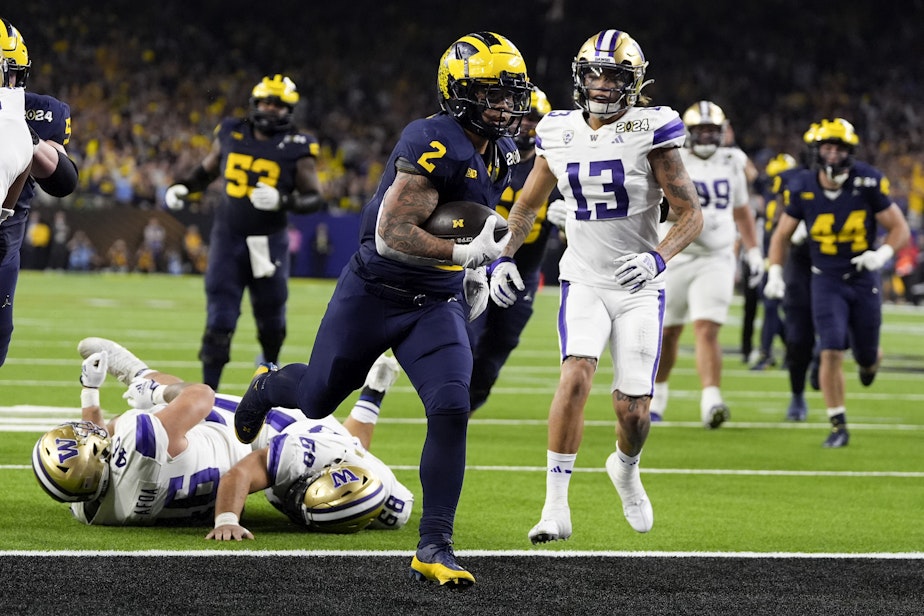Is it worth keeping a college football program, even if it's losing money?

College football is done for another year. Now, it’s time for athletic departments to assess their programs.
For Eastern Washington University in Cheney, Washington, about 20 minutes outside of Spokane, that means contemplating a difficult decision — whether to keep supporting its money losing football team.
Eastern Washington is one of the smaller state schools. About 31% of its population are first generation students, and 37% are students of color.
And Eastern Washington University is in the red.
The school had a more than $14 million budget gap in the last fiscal year. And it’s expecting another shortfall of around $10 million to $13 million next year.
That’s not exactly surprising for the university. Since 2018, it’s estimated that the undergrad headcount has dropped by a third. Three years ago, EWU faculty prepared a report assessing the university’s troubled financial position. In December, they presented more findings to the school’s board of trustees.
Sponsored
Both said the same thing — one of the biggest costs per year is the school’s Division I football program. And both recommended downsizing the athletics department as part of a slate of cost-saving measures.
But so far – that’s been a non-starter with university leadership.
"They've started what they're calling the strategic resource allocation," explained Inlander reporter Samantha Wohlfeil. "Basically about a year ago, they tasked both academic programs... and all university services, whether that's dining halls, residences, athletics, with looking at their budgets and seeing which programs might need to change and which ones might need to get cut."
The results were surprising, Wohlfeil said. Many academic programs bring in more money than they spend. But there are some cost losing items on the services side, including athletics.
"For intercollegiate athletics, overall, they're looking at about a $5.3 million deficit that they had in 2022," Wohlfeil said. "They brought in about $3.3 million in revenue, and they had $8.66 million in expenses."
Sponsored
The school's Division 1 football program accounts for 56% of the overall athletic budget.
"For football, they brought in about $1.6 million in revenue, and they cost about $4.9 million," Wohlfeil said.
Wohlfeil said no one is suggesting that football be cut completely from the school. But it has been suggested that the program could drop from Division 1, where the team now plays in the Big Sky Conference, to Division 2.
"There are a lot of students and alumni who push back on that idea pretty strongly because they are very proud of that football program," Wohlfeil said.
EWU's board of trustees also voted to stay in Division 1 in 2021, following the last recommendation of moving to Division 2.
Sponsored
There are other options for disinvestment to help with costs. On the academic side, 175 programs were selected for disinvestment. That's 40% of the school's overall academic offerings.
"But they only make up about 20% of the academic costs," Wohlfeil said.
College football programs the size of Eastern don’t typically make money.
The vast majority run deficits – in fact, in 2019, the median deficit in the Football Bowl Subdivision was nearly $19 million. So compared to that – the Eastern program is quite thrifty.
Stan Emert said there are non-financial reasons to keep college football. Namely: it's good for business.
Sponsored
Emert, who is the director of Sports Enterprise Management at UW Tacoma’s Milgard School of Business, said that football is, first and foremost, a recruiting tool.
"And what are not in the numbers... is how many students come to a school, in part because of the sports program," Emert explained.
Emert said he doesn't blame EWU faculty for making the argument that football should be cut. But it's not realistic.
Those coaching salaries, and football budgets, are justified because of the products that those coaches are able to produce for the school and the profits that they bring in.
For a school like Eastern, which is running a deficit, Emert notes that, "if you are competing with like companies with similar products, and everything roughly is the same. And you're not making money, but others are... then perhaps you have to look elsewhere than the product."





